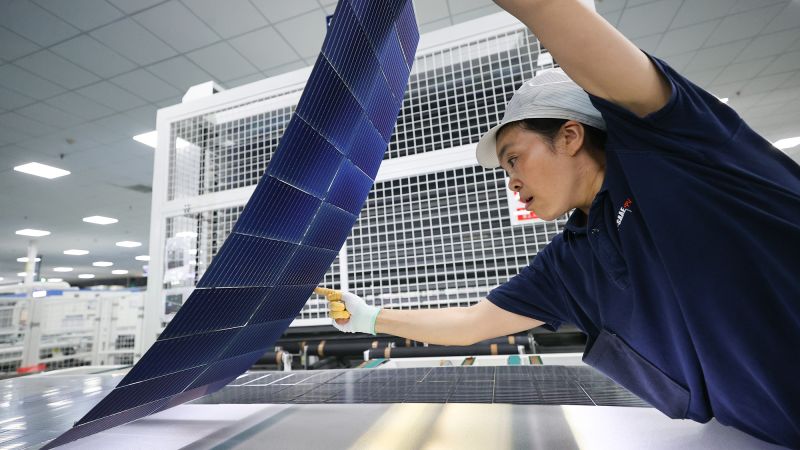The United States and Europe are taking steps to reduce China’s dominant position in clean energy technologies, including offering subsidies to local manufacturers and increasing tariffs on Chinese imports. This comes as governments aim to green their economies and meet climate goals while also protecting industries and jobs from cheap imports. While China’s supply chains are crucial for reducing pollution and costs, the West hopes to avoid becoming overly reliant on a single supplier like Russia for gas and wishes to develop its own technologies.
Rising competition in green technologies has strained relations between China and its major trading partners, with the US and EU adopting tough stances on Chinese imports. China currently leads the race in clean energy manufacturing, accounting for three-quarters of global investments in 2021. The country is projected to invest significantly more than the US and EU in clean energy this year, making it the world’s largest and lowest-cost supplier of many technologies and critical minerals necessary for the clean energy transition.
China’s dominance extends to critical minerals essential for green technologies, with over half of global processing of lithium and cobalt taking place in the country. Beijing’s control over these minerals has led to export controls and tightened supply restrictions on certain materials, posing risks to the global green transition. China’s focus on exporting products like EVs, lithium batteries, and solar panels has prompted responses from the EU, which has increased tariffs on Chinese EVs to protect its own industry.
Experts caution against extensive tariffs as a response to China’s dominance, as they can drive up costs and slow down the transition to green energy. Western policymakers are encouraged to focus on areas of genuine national security concerns, such as the production of advanced semiconductors and artificial intelligence technologies, while also promoting innovation and emerging technologies. Diversification of supply chains for critical minerals and energy sources is recommended to reduce risks and ensure a smooth transition to clean energy.
As deployment of low-emissions technologies remains below the level needed to reach net-zero carbon emissions by 2050, the costs of climate change continue to rise, particularly in the poorest countries. Policymakers are urged to prioritize initiatives that protect the environment and local jobs, while also promoting diversity in supply chains and investment in emerging technologies. Collaboration among countries and trade policies that reduce risks and promote energy security are key to accelerating the clean energy transition and addressing global climate challenges.













